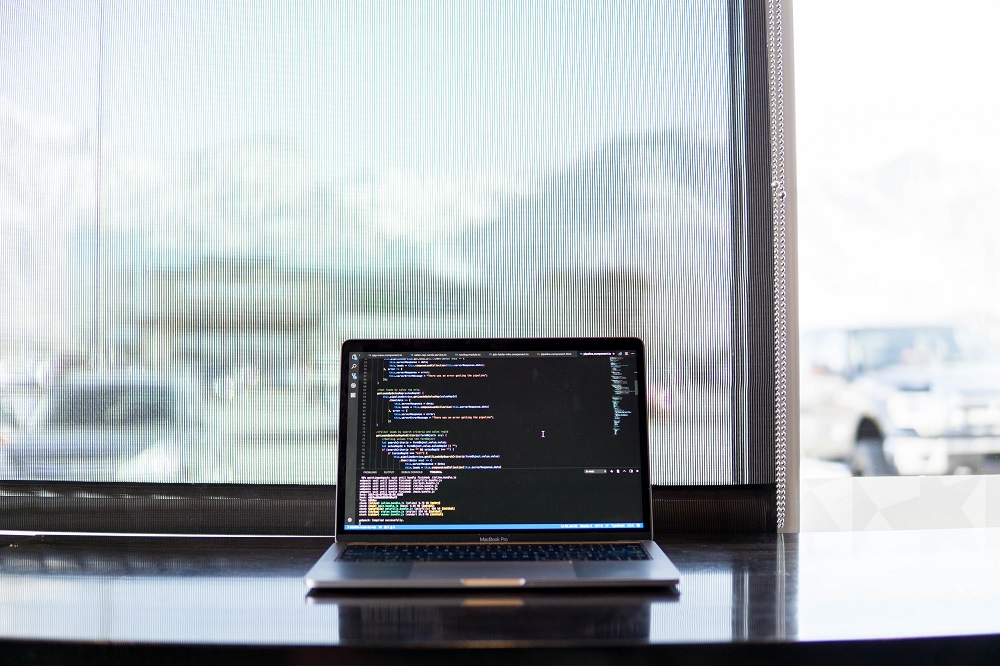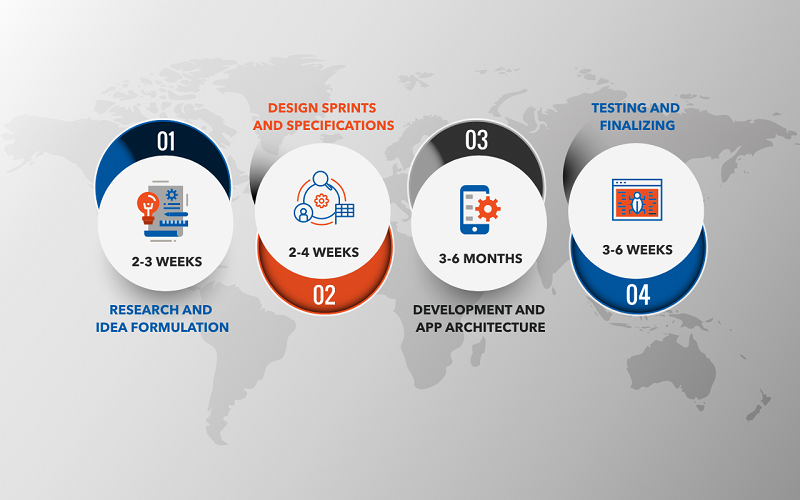
How Long Does a Mobile Application Development Project Take?
The dependency on mobile applications is increasing than ever, and it is diversified. There are certain apps we can’t live without today. However, they are worth the result of the time and money that the application development takes.
Every mobile application is entirely different in its design, complexity, features, etc. However, the basic development stages are similar. Customizing each app, feel, look, and functionality makes the development process so detailed and coding complicated.
For every mobile app development, there are four different stages involved. Here we’ve outlined each stage of mobile app development along with project timelines and requirements.
Let’s start exploring!
The four stages of a typical app development process
- Research and idea formulation- 2-3 weeks
- Design sprints and specifications- 2-4 weeks
- Development and app architecture– 3-6 months
- Testing and finalizing- 3-6 weeks
Now, let’s move on to each stage in details:

Stage 1: Research and idea formulation (2-3 weeks)
All of us are familiar with the saying, ‘well begun is half done’; it is the same when it comes to app development also. The first stage involving research and idea formulation is predominant because it means a whole lot more than just making sure it will work.
The research stage’s ultimate goal is to create a shared understanding of the market, app users, problems it may face, and finally, how your app’s success should look like.
By the end of this stage, you should have the following:
Minimum Viable Product (MVP): This should cover the basic things your initial customers will be looking for. It need not cover all the additional requirements that are crucial for launch.
User stories: An idea of how and for what people will use your app. These user stories will help identify the end-user users’ goals and the navigation/pages they use to attain this goal.
App prototype: App prototype should be designed around specific functions or features that are vital for your project. These can be tested and validated before you begin development.
This stage is the perfect one for adding unique features and adding the brand’s customized twist.
Plan the best and move to the next stage.
Stage 2: Design sprints and specifications (2-4 weeks)
Design matters when it comes to apps. Design sprints are being used to test various aspects of your app, a unique five-day process for sorting out major challenges and validating ideas through prototyping and testing customers’ ideas.
Design sprints will help you to:
- Understand: Map out the problem and pick a prior area to focus
- Ideate: Sketch out solutions on paper
- Decide: Make validate decisions and turn ideas into a testable hypothesis
- Prototype: Hack together a practical prototype
- Test: Feedback from real users
After getting these rightly, we can move to stage 3.
Stage 3: Development and app architecture (3-6 months)
Once the planning is done, the developers and designers will work magic and develop the app. This application development stage consists of three elements: UI and UX, Front End, and Back End. These are highly technical processes, particularly if the app needs to be integrated with other technologies.
Graphic designers will craft the UI with much care, which helps to enhance the UX of the app. This stage should be well utilized because user interface is necessary for any app to flourish n the market, as users are more likely to choose visually appealing ones. Your app should be able to stand out amidst your hundreds of rivals prevailing in the market.
The front end and the Backend are also very crucial elements of app development. Front end is what your users will see when they use and navigate your apps. But this will make sense only if the back end is done perfectly. Back end is all about coding and technical functionalities that will make your app tick.
Let us deep dive a little to know what these processes consist of:
Front end engineering:
- Frontend logic
- UI design
- Caching
- UI development
- Synchronization
- Wireframing
Back end engineering:
- Data integration
- Data storage
- Versioning
- Users management
- Server-side logic
It is critical to developing an overview and plan, so it should not cross the budget and requirements.
Stage 4: Testing and finalizing (3-6 weeks)
One of the most crucial stages of being handled with the utmost care before an app is being launched. Even though your team may be reviewing the UI, UX, front end, and backend during the application development process, the issue may still arise when things are put together. Ensure proper testing is done to make the app bug-free.
There are different testing exercises to sort out this. Alpha and Beta testing will help check if multiple users can use your app simultaneously.
Load and performance testing will help you analyze that the app is completely error-free before it is launched.
Also, testing should be done on different browsers and different devices as well.
Take your time to examine if your development team has kept the app specifications’ integrity and the final product’s user experience satisfies your concerns. Rechecking will help you examine if any bugs remain resolved before your app is launched.
Bottom line
The more complex your app is, the more time and money it will take for development. Proper planning should be done during each stage, and things should be cross-checked for errors.
We all know that mobile devices continue to seize the lion’s share of the technological era, app development can help your firm to greater heights. As this is a lengthy and complicated process that should be done perfectly, consider working with experienced and innovative hands to guide you through every step.





Comments
No comments yet.